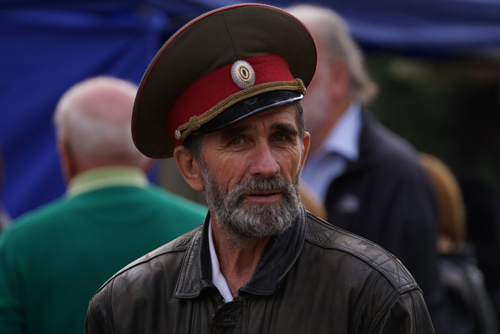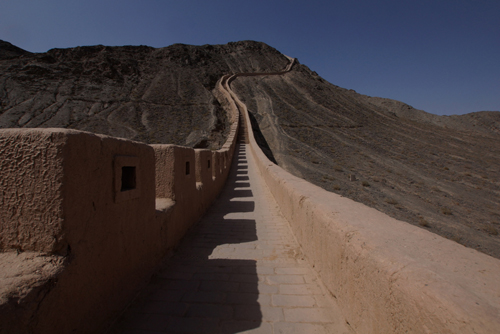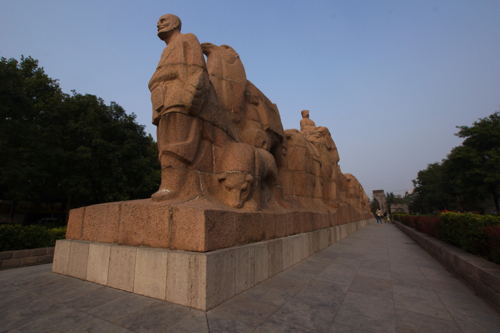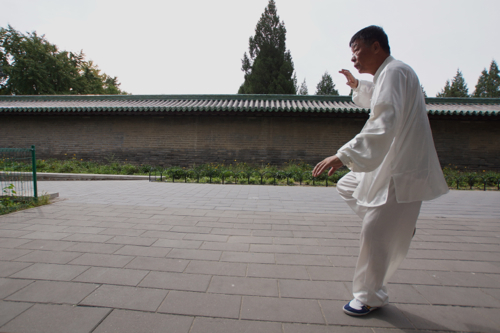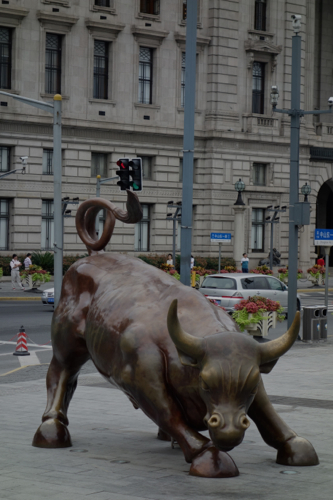The rain had stopped and a light mist hung over the sky for our drive from Bishkek to Arslanbob. It then lifted and rising up before us was the snow capped Fergana Range.
We drove through the Otmek and Ala-Bel Passes, both over 3,000m high. As we descended we negotiated our way through more herds of animals coming down to the winter pastures in the valley below.
It was a long day in the car as it’s over 600km from Bishkek to Arslanbob, where we were having a home stay with a local family.
We passed the giant Toktogal Reservoir on the way. This is a huge source of hydro power for Kyrgyzstan, yet with the dryer seasons the reservoir is low and it’s not producing the electricity it once did.
Arslanbob is home to the world’s largest walnut grove, producing over 1500 tonnes of walnuts per year. The harvest happens in mid-September and the entire township is involved.
These are naturally occurring forests that were supposedly known during the time of Alexander the Great. The walnut is sometimes known as the ‘Greek Nut’ after Alexander. It’s believed that he exported the Arslanbob nuts to Greece after his Central Asian campaigns.
In more recent times walnuts from this region were Kyrgyzstan’s first export to Europe.
The country and the people seem to be poorer than in the north with fewer cars and more donkeys.
Our home stay was in a small property in the middle of a walnut forest. The nuts were everywhere, lying on the floor drying or piled high in containers. They are such an important part of the local economy, that when the children go out to play in the forest, they are expected to gather nuts.
The next day, before we started our drive from Arslanbob to Osh we visited the Long and Twin Water Falls.
The trip to the Long Water Fall involved a 15 minute drive in yet another Lada Niva. This was a little hairier than our first Lada experience and involved some real off-road driving. We then had a 45 minute climb up a steep shaley slope. This water fall has an impressive drop of 80m however the best views were looking back down the valley to Arslanbob.
The Twin Water Fall has a drop of 23m and is easily accessible from the township, without the need of a rattly Lada and driver.
The drive to Osh was a much shorter road trip, of under 200km, compared to the previous day and a lot easier on our backs and bums over the bumpy roads.
In Kyrgyzstan most vehicles are second hand and brought in from Japan, Korea or Europe. They come in left or right hand drive – either is acceptable.
The vehicles are usually between three and nine years old. This way they avoid the excessive new vehicle tax and still have a good life ahead of them.
There are many varieties of vehicles imported, from budget to luxury. Each town seems to have a predominance of a few particular brands.
Osh had Hummers and the humble Woo (Daewoo). The Woo is even the car of choice for the Osh taxi fleet. Which is not that practical when you have two sacks of potatoes, a box of tomatoes, 20 litres of water and your wife to transport home from the market.
Seat belts are compulsory, but only in the front seat. As these are mainly late model vehicles, they are fitted with both front and rear seat belts. However for some reason the rear belts are tucked away out of site, unable to be used. I questioned Vitalli about this and he insisted that he didn’t have any, despite the fact that his were clearly visible.
One was actually holding the spare tyre in place.
On the way to Osh we stopped at the Uzgen Archaeological and Architectural Complex. The minaret and mausoleum waere built between the tenth and eleventh centuries. The mausoleum was built in three stages which is evident by the three distinctive sections of the building.
Osh is one of the oldest cities in Central Asia, with a history dating back over 3,000 years.
It’s situated in the Ferghana Valley, that spans both Kyrgyzstan and neighbouring Uzbekistan.
In the 8th century it rose to prominence as a silk production centre along the Silk Road.
There has been much civil unrest in the region between ethic Kyrgyz and Uzbeks. First in 1990 and more recently in 2010.
Our morning tour of Osh took in Sulaiman-Too or Solomon’s Throne, a rocky outcrop that rises up abruptly behind the city. It’s of great significance to Muslims as the Prophet Mohammed is believed to have prayed there.
Built into the mountain side is the Cave Museum. The exhibits aren’t remarkable but the museum is certainly unique. The whole area has been declared a UNESCO World Heritage Site.
Within the rocks around Solomon’s Throne are many small spiritual areas that, used correctly, will cure ailments, give long life and even make women fertile.
After lunch we went to Osh Market (Not to be mistaken with the Osh Bazaar we had visited in Bishkek) where the usual array of fruit and veg were on display. Again all the clothes and souvenirs were made in China.
The drive from Osh to Kozhokelen was an interesting one.
Firstly I had the feeling that our driver and guide had no idea where we were going, secondly, neither did we.
We later discovered that this was their first trip to the Pamir Alay Mountains and we were in the vanguard of travellers to this region.
We finally arrived at our home stay after nearly three hours of driving, much of it making good use of the Nissan Pathfinder’s 4X4 capabilities.
Vitali then decided that we needed to make a ‘beer run’ so that took another 50 minutes, retracing our steps back down the mountain to another village.
This really was a home stay, as the family had moved into another area of the house and we had the prized room next to the oven. This was fine with us as the temperature had plummeted.
Naturally the loo was outside and, for obvious reasons, a distance from the house.
It was definitely going to be a one loo stop night.
Home stays are a way that the locals can make few extra Som on the side, as these frontier destinations have little tourist infrastructure, such as guest houses or hotels.
The next morning we were off for a 6km trek to ‘The Waterfall’, stopping along the way to see The Blue Grotto. This cave had become a shrine, in honour of a local Muslim, who was said to have had magical powers. Hanging near the cave was the head of an Ibex or ‘Marco Polo’ as they are known, also dedicated to this gifted local.
The weather was cold and damp but the views were spectacular.
As we descended it actually started to snow. I was very glad that I had packed my woollen beanie and gloves.
Shipping containers seem to get a second, or even a third life in Kyrgyzstan, as they are used in many different ways. They are the main storage area in the markets and on building sites. I have even seen them integrated into buildings and also pulled apart and used as fencing.
The people, culture and landscape of Kazakhstan and Kyrgyzstan are very different, however through their common ties with Russia they are also similar.
Our next stop is Uzbekistan so it will be interesting to see the Soviet legacy there.


